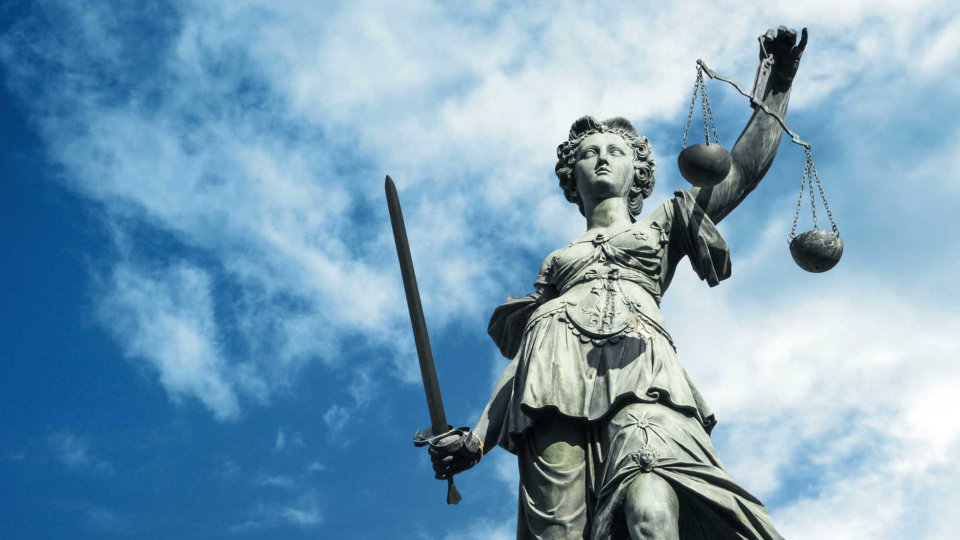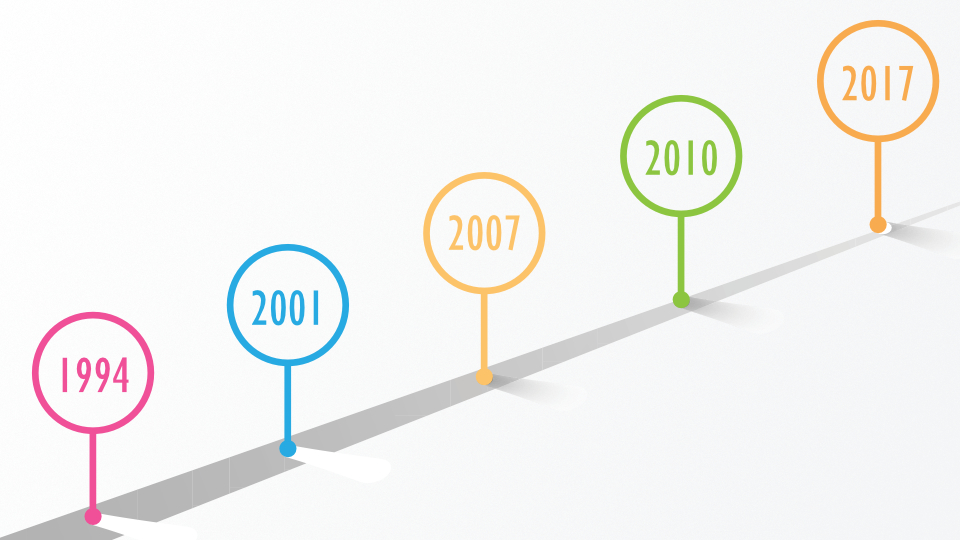“The Hunting Ground” is a shockingly biased exercise in extremist propaganda intent on further chipping away the rights of presumptively innocent college men. It is filled with purported first-hand, and very dramatic, accounts of sexual assaults—classic “he said-she said” claims—except the filmmakers didn’t bother to show the “he said” side or to acknowledge even the possibility that there might be more than one side to any of the stories they presented.
None of the women’s stories—none of them—were challenged with competing evidence that might cast even the slightest doubt on them. The overall effect is akin to a 1970s radical feminist rant that insists women must always be believed solely because they cry “rape.” Director Kirby Dick creates the impression that colleges are complicit in the campus rape “epidemic,” presumably because they do not automatically believe accusers and expel the men accused.
I won’t do a detailed analysis of the film’s innumerable claims because it’s been thoroughly decimated by nineteen Harvard law professors, Emily Yoffe here and here, Stuart Taylor, and Ashe Schow in a number of columns. As internal emails reveal, the people who made the film set out to ensure that the accused’s side wouldn’t be fairly told. I have a few impressions of this atrocity.
That the film is the product of an extremist, indeed radical, feminist philosophy is evidenced by some of the people it features. Many of the talking heads presented are well-known to regular readers of this blog.
Dr. David Lisak declares that the problem of sexual assault on campus is “enormous” and his grand thesis that campus rape is primarily the product of serial rapists is given center stage even though that theory has been thoroughly undermined (Linda M. LeFauve has a magnificent new article examining Lisak’s flawed research).
Prof. Caroline Heldman makes a few appearances. Readers will recall her comment about the spate of lawsuits filed by college men who claim their schools denied them due process in connection with sexual assault claims: “These lawsuits are an incredible display of entitlement, the same entitlement that drove them to rape” (a court in her state recently demonstrated the bias and folly in Heldman’s assessment).
Kimberly Theidon pops up. Readers will recall that she was featured here for trivializing the victimization of the wrongly accused.
Diane Rosenfeld pops up. I assume this is the same Harvard lecturer who objected to the “snow penis” constructed by Harvard’s crew team. The public space, she said, “should be free from menacing reminders of women’s sexual vulnerability.” According to the Crimson: “She said the snow penis follows a long line of public phallic symbols, including the Washington Monument and missiles. ‘Women do not need to be reminded of the power of the symbol of the male genitalia,’ Rosenfeld said. ‘My guess is that they are constantly reminded of it in daily messages.’”
Caitlin Flanagan pops up. Readers will recall that when a 20-year-old Ohio University male student was physically beaten after engaging in a public sex act with a 20-year-old female student that was almost certainly not rape, Flanagan applauded the vigilante “justice” inflicted on him–he “got what was coming to him: By committing his act in public, he exposed himself to the swift judgment of men, and his ass-kicking probably won’t be the half of his problems.”
We also reported that she wants to shutter all frat houses: “They are built of the same Jeffersonian architecture as the rest of the campus. At once august and moldering, they seemed sinister, to stand for male power at its most malevolent and institutionally condoned.” No, I didn’t make up that quote.
Alexandra Brodsky pops up. Readers will recall that she took issue with those who suggest campus kangaroo sex tribunals can’t provide justice in “he said-she said” sex cases: “. . . for some . . . , this devotion to the criminal law response suggests a subtle misogyny that many focusing on this issue have internalized.”
Senator Kirsten Gillibrand pops up. Readers will recall that she invited mattress toting Columbia student Emma Sulkowicz (who also makes a cameo) to be her guest at the State of the Union and actually called the presumptively innocent man Sulkowicz accused a “rapist.”
I probably missed some important characters–it was difficult to pay close attention to this, and thankfully, the menacing, pounding score kept me awake. But with a cast of “experts” like that, is there any wonder whether this is a fair and balanced approach to a thorny problem?
One glaring omission from the “documentary”: feminist Brett Sokolow, the undisputed leader of the campus sexual grievance industry who has done more to shape colleges’ sexual misconduct policies than anyone in America. Sokolow last year wrote that he sees “case-after-case” where “sincere victims [sic] . . . believe something has happened to them” even though “overwhelming proof” shows it did not.
Mr. Sokolow suggested mental health issues may play an important factor in these wrongful accusations. Sokolow is more prominent in the college rape movement than anyone featured in the film–I suppose Sokolow was omitted because his view would not fit the preferred narrative.
A few quick observations:
- The film calls college sexual assault an “epidemic”–apparently the filmmakers don’t own a dictionary.
- With a straight face, a professor says that college is not a safe place for women–the kind of hysteria that would be laugh-out-loud funny until it sinks in that someone charged with teaching our children actually harbors such delusions.
- The film cites statistics that treat every allegation of rape as a proven rape, ignoring the fact that when rape claims are subjected to competing claims of innocence, it is impossible to tell what actually happened in the majority of cases.
- The film assumes that there are no more false rape claims than those claims definitively determined to be false—all the rest (including both definitively proven rape claims and the far more common uncertain claims which make up the majority of rape claims) are assumed to be actual rapes.
- College women are told they should be worried about “the people [code word for “men”] that you do know”—change the word “people” in that sentence to “Muslims” and watch this film’s fan base have a conniption.
- College administrators, the film tells us, are “overly concerned” about false reporting when, in fact, they are not at all concerned about it and are happy to find guilt even when there is not clear and convincing evidence to support the accusation.
- The infamous Koss report, which started the college rape-is-rampant hysteria, is cited with approval.
- The film also treats as sympathetic the vigilantes at Brown who branded presumptively innocent men rapists by scribbling their names on college bathroom walls, oblivious to the fact that such misconduct is animated by a chilling hostility to due process.
- The sad case of Elizabeth Seeberg was featured in a way that made viewers assume she was sexually assaulted. In fact, it is not clear whether a sexual battery played a role in Seeberg taking her own life.
- The film cited the fact that a lot of schools reported no sexual assaults in 2012–not as something to be applauded or as evidence that some schools are doing an effective job combating sexual violence, but rather to “prove” the made-up college rape epidemic.
- Jameis Winston’s attorney threatened to sue CNN if it aired the film. Let’s see if he follows through.
When the filmmakers finally got around to presenting the “he said” side of the story, they trotted out a hapless young man who looks to be of college age and who asks rhetorically whether a man should be considered a rapist just because a woman said “no” and they had sex. The implication is that young men are so stupid, and are such misogynists, they don’t understand “no.”
Note the filmmakers didn’t ask women if they understand what consent is—ironically, one of the studies used to support the “college rape is rampant” claim is the one where almost half of all college women think that when a woman gives a guy a “nod in agreement,” that isn’t enough for consent).
Sexual assault on campus is a very complicated, indeed thorny, issue that should not be tackled by fomenting a public outcry as this film tries to do. Every time someone foments a public outcry about college rape, presumptively innocent young men lose more rights. Innocence Project guru Mark A Godsey has warned that “the risk of wrongful conviction is the highest when there’s public outcry. Most of the exonerations and wrongful convictions have occurred in rape cases.”
What an interesting film “The Hunting Ground” might have been if it had bothered to present both sides of the story–but that would not have generated the mindless, angry outcry it seems the film is hoping for.
Thank You for Reading
If you like what you have read, feel free to sign up for our newsletter here:
About the Author
Related Posts
6 Comments
Comments are closed.
“The Hunting Ground” is a shockingly biased exercise in extremist propaganda intent on further chipping away the rights of presumptively innocent college men. It is filled with purported first-hand, and very dramatic, accounts of sexual assaults—classic “he said-she said” claims—except the filmmakers didn’t bother to show the “he said” side or to acknowledge even the possibility that there might be more than one side to any of the stories they presented.
None of the women’s stories—none of them—were challenged with competing evidence that might cast even the slightest doubt on them. The overall effect is akin to a 1970s radical feminist rant that insists women must always be believed solely because they cry “rape.” Director Kirby Dick creates the impression that colleges are complicit in the campus rape “epidemic,” presumably because they do not automatically believe accusers and expel the men accused.
I won’t do a detailed analysis of the film’s innumerable claims because it’s been thoroughly decimated by nineteen Harvard law professors, Emily Yoffe here and here, Stuart Taylor, and Ashe Schow in a number of columns. As internal emails reveal, the people who made the film set out to ensure that the accused’s side wouldn’t be fairly told. I have a few impressions of this atrocity.
That the film is the product of an extremist, indeed radical, feminist philosophy is evidenced by some of the people it features. Many of the talking heads presented are well-known to regular readers of this blog.
Dr. David Lisak declares that the problem of sexual assault on campus is “enormous” and his grand thesis that campus rape is primarily the product of serial rapists is given center stage even though that theory has been thoroughly undermined (Linda M. LeFauve has a magnificent new article examining Lisak’s flawed research).
Prof. Caroline Heldman makes a few appearances. Readers will recall her comment about the spate of lawsuits filed by college men who claim their schools denied them due process in connection with sexual assault claims: “These lawsuits are an incredible display of entitlement, the same entitlement that drove them to rape” (a court in her state recently demonstrated the bias and folly in Heldman’s assessment).
Kimberly Theidon pops up. Readers will recall that she was featured here for trivializing the victimization of the wrongly accused.
Diane Rosenfeld pops up. I assume this is the same Harvard lecturer who objected to the “snow penis” constructed by Harvard’s crew team. The public space, she said, “should be free from menacing reminders of women’s sexual vulnerability.” According to the Crimson: “She said the snow penis follows a long line of public phallic symbols, including the Washington Monument and missiles. ‘Women do not need to be reminded of the power of the symbol of the male genitalia,’ Rosenfeld said. ‘My guess is that they are constantly reminded of it in daily messages.’”
Caitlin Flanagan pops up. Readers will recall that when a 20-year-old Ohio University male student was physically beaten after engaging in a public sex act with a 20-year-old female student that was almost certainly not rape, Flanagan applauded the vigilante “justice” inflicted on him–he “got what was coming to him: By committing his act in public, he exposed himself to the swift judgment of men, and his ass-kicking probably won’t be the half of his problems.”
We also reported that she wants to shutter all frat houses: “They are built of the same Jeffersonian architecture as the rest of the campus. At once august and moldering, they seemed sinister, to stand for male power at its most malevolent and institutionally condoned.” No, I didn’t make up that quote.
Alexandra Brodsky pops up. Readers will recall that she took issue with those who suggest campus kangaroo sex tribunals can’t provide justice in “he said-she said” sex cases: “. . . for some . . . , this devotion to the criminal law response suggests a subtle misogyny that many focusing on this issue have internalized.”
Senator Kirsten Gillibrand pops up. Readers will recall that she invited mattress toting Columbia student Emma Sulkowicz (who also makes a cameo) to be her guest at the State of the Union and actually called the presumptively innocent man Sulkowicz accused a “rapist.”
I probably missed some important characters–it was difficult to pay close attention to this, and thankfully, the menacing, pounding score kept me awake. But with a cast of “experts” like that, is there any wonder whether this is a fair and balanced approach to a thorny problem?
One glaring omission from the “documentary”: feminist Brett Sokolow, the undisputed leader of the campus sexual grievance industry who has done more to shape colleges’ sexual misconduct policies than anyone in America. Sokolow last year wrote that he sees “case-after-case” where “sincere victims [sic] . . . believe something has happened to them” even though “overwhelming proof” shows it did not.
Mr. Sokolow suggested mental health issues may play an important factor in these wrongful accusations. Sokolow is more prominent in the college rape movement than anyone featured in the film–I suppose Sokolow was omitted because his view would not fit the preferred narrative.
A few quick observations:
- The film calls college sexual assault an “epidemic”–apparently the filmmakers don’t own a dictionary.
- With a straight face, a professor says that college is not a safe place for women–the kind of hysteria that would be laugh-out-loud funny until it sinks in that someone charged with teaching our children actually harbors such delusions.
- The film cites statistics that treat every allegation of rape as a proven rape, ignoring the fact that when rape claims are subjected to competing claims of innocence, it is impossible to tell what actually happened in the majority of cases.
- The film assumes that there are no more false rape claims than those claims definitively determined to be false—all the rest (including both definitively proven rape claims and the far more common uncertain claims which make up the majority of rape claims) are assumed to be actual rapes.
- College women are told they should be worried about “the people [code word for “men”] that you do know”—change the word “people” in that sentence to “Muslims” and watch this film’s fan base have a conniption.
- College administrators, the film tells us, are “overly concerned” about false reporting when, in fact, they are not at all concerned about it and are happy to find guilt even when there is not clear and convincing evidence to support the accusation.
- The infamous Koss report, which started the college rape-is-rampant hysteria, is cited with approval.
- The film also treats as sympathetic the vigilantes at Brown who branded presumptively innocent men rapists by scribbling their names on college bathroom walls, oblivious to the fact that such misconduct is animated by a chilling hostility to due process.
- The sad case of Elizabeth Seeberg was featured in a way that made viewers assume she was sexually assaulted. In fact, it is not clear whether a sexual battery played a role in Seeberg taking her own life.
- The film cited the fact that a lot of schools reported no sexual assaults in 2012–not as something to be applauded or as evidence that some schools are doing an effective job combating sexual violence, but rather to “prove” the made-up college rape epidemic.
- Jameis Winston’s attorney threatened to sue CNN if it aired the film. Let’s see if he follows through.
When the filmmakers finally got around to presenting the “he said” side of the story, they trotted out a hapless young man who looks to be of college age and who asks rhetorically whether a man should be considered a rapist just because a woman said “no” and they had sex. The implication is that young men are so stupid, and are such misogynists, they don’t understand “no.”
Note the filmmakers didn’t ask women if they understand what consent is—ironically, one of the studies used to support the “college rape is rampant” claim is the one where almost half of all college women think that when a woman gives a guy a “nod in agreement,” that isn’t enough for consent).
Sexual assault on campus is a very complicated, indeed thorny, issue that should not be tackled by fomenting a public outcry as this film tries to do. Every time someone foments a public outcry about college rape, presumptively innocent young men lose more rights. Innocence Project guru Mark A Godsey has warned that “the risk of wrongful conviction is the highest when there’s public outcry. Most of the exonerations and wrongful convictions have occurred in rape cases.”
What an interesting film “The Hunting Ground” might have been if it had bothered to present both sides of the story–but that would not have generated the mindless, angry outcry it seems the film is hoping for.
Thank You for Reading
If you like what you have read, feel free to sign up for our newsletter here:
About the Author
Related Posts
6 Comments
-
Great take on the bad actors in the college rape witch hunt. Thanks for the direct quotes!
-
Full of verifiable information and rational perspectives. Appropriately forceful but level headed tone. Good review to have online as a resource. Thanks.
-
The more they push these myths into law, the more they are driving young men to MGTOW and young women to single motherhood or spinsterhood. Ask not where all the good men have gone, they have gone from thee.
-
112345678
Comments are closed.
More from Title IX for All
Accused Students Database
Research due process and similar lawsuits by students accused of Title IX violations (sexual assault, harassment, dating violence, stalking, etc.) in higher education.
OCR Resolutions Database
Research resolved Title IX investigations of K-12 and postsecondary institutions by the Department of Education’s Office for Civil Rights (OCR).
Attorneys Directory
A basic directory for looking up Title IX attorneys, most of whom have represented parties in litigation by accused students.







Great take on the bad actors in the college rape witch hunt. Thanks for the direct quotes!
Full of verifiable information and rational perspectives. Appropriately forceful but level headed tone. Good review to have online as a resource. Thanks.
The more they push these myths into law, the more they are driving young men to MGTOW and young women to single motherhood or spinsterhood. Ask not where all the good men have gone, they have gone from thee.
112345678
http://hesreiestser.eu.ki
http://hesreiejhsacjzcxsser3.eu.ki